Xun Liu
GPR: Towards a Generative Pre-trained One-Model Paradigm for Large-Scale Advertising Recommendation
Nov 13, 2025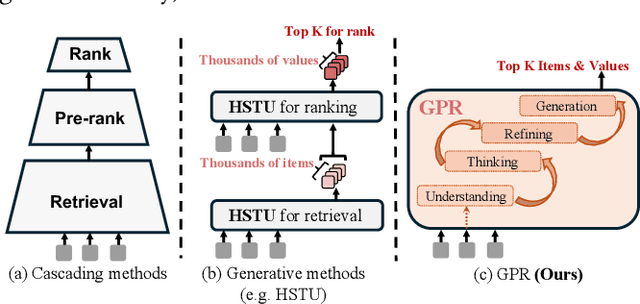

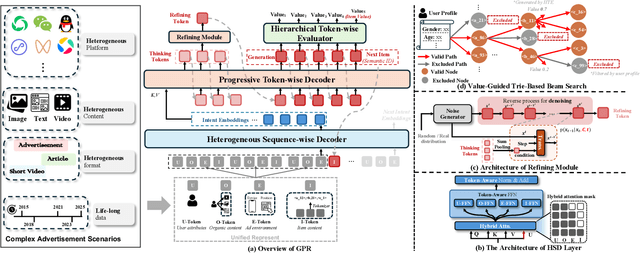
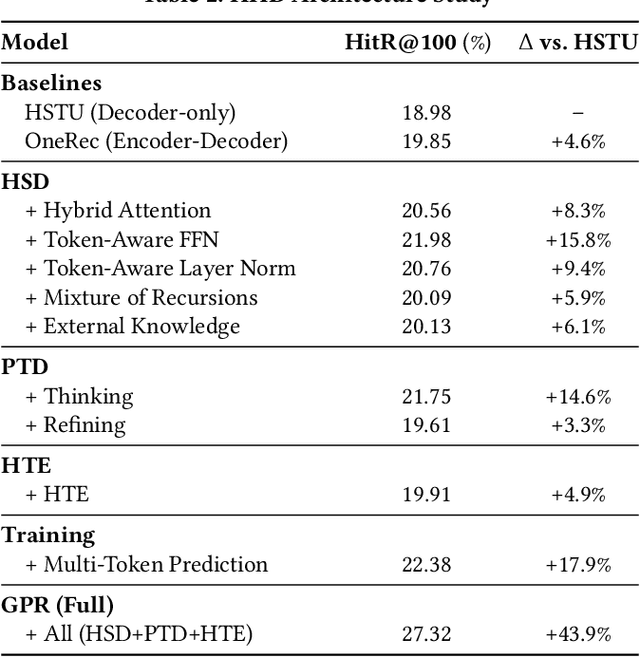
Abstract:As an intelligent infrastructure connecting users with commercial content, advertising recommendation systems play a central role in information flow and value creation within the digital economy. However, existing multi-stage advertising recommendation systems suffer from objective misalignment and error propagation, making it difficult to achieve global optimality, while unified generative recommendation models still struggle to meet the demands of practical industrial applications. To address these issues, we propose GPR (Generative Pre-trained Recommender), the first one-model framework that redefines advertising recommendation as an end-to-end generative task, replacing the traditional cascading paradigm with a unified generative approach. To realize GPR, we introduce three key innovations spanning unified representation, network architecture, and training strategy. First, we design a unified input schema and tokenization method tailored to advertising scenarios, mapping both ads and organic content into a shared multi-level semantic ID space, thereby enhancing semantic alignment and modeling consistency across heterogeneous data. Second, we develop the Heterogeneous Hierarchical Decoder (HHD), a dual-decoder architecture that decouples user intent modeling from ad generation, achieving a balance between training efficiency and inference flexibility while maintaining strong modeling capacity. Finally, we propose a multi-stage joint training strategy that integrates Multi-Token Prediction (MTP), Value-Aware Fine-Tuning and the Hierarchy Enhanced Policy Optimization (HEPO) algorithm, forming a complete generative recommendation pipeline that unifies interest modeling, value alignment, and policy optimization. GPR has been fully deployed in the Tencent Weixin Channels advertising system, delivering significant improvements in key business metrics including GMV and CTCVR.
The Estimation of Continual Causal Effect for Dataset Shifting Streams
Apr 29, 2025Abstract:Causal effect estimation has been widely used in marketing optimization. The framework of an uplift model followed by a constrained optimization algorithm is popular in practice. To enhance performance in the online environment, the framework needs to be improved to address the complexities caused by temporal dataset shift. This paper focuses on capturing the dataset shift from user behavior and domain distribution changing over time. We propose an Incremental Causal Effect with Proxy Knowledge Distillation (ICE-PKD) framework to tackle this challenge. The ICE-PKD framework includes two components: (i) a multi-treatment uplift network that eliminates confounding bias using counterfactual regression; (ii) an incremental training strategy that adapts to the temporal dataset shift by updating with the latest data and protects generalization via replay-based knowledge distillation. We also revisit the uplift modeling metrics and introduce a novel metric for more precise online evaluation in multiple treatment scenarios. Extensive experiments on both simulated and online datasets show that the proposed framework achieves better performance. The ICE-PKD framework has been deployed in the marketing system of Huaxiaozhu, a ride-hailing platform in China.
Ultra-Low Complexity On-Orbit Compression for Remote Sensing Imagery via Block Modulated Imaging
Dec 24, 2024Abstract:The growing field of remote sensing faces a challenge: the ever-increasing size and volume of imagery data are exceeding the storage and transmission capabilities of satellite platforms. Efficient compression of remote sensing imagery is a critical solution to alleviate these burdens on satellites. However, existing compression methods are often too computationally expensive for satellites. With the continued advancement of compressed sensing theory, single-pixel imaging emerges as a powerful tool that brings new possibilities for on-orbit image compression. However, it still suffers from prolonged imaging times and the inability to perform high-resolution imaging, hindering its practical application. This paper advances the study of compressed sensing in remote sensing image compression, proposing Block Modulated Imaging (BMI). By requiring only a single exposure, BMI significantly enhances imaging acquisition speeds. Additionally, BMI obviates the need for digital micromirror devices and surpasses limitations in image resolution. Furthermore, we propose a novel decoding network specifically designed to reconstruct images compressed under the BMI framework. Leveraging the gated 3D convolutions and promoting efficient information flow across stages through a Two-Way Cross-Attention module, our decoding network exhibits demonstrably superior reconstruction performance. Extensive experiments conducted on multiple renowned remote sensing datasets unequivocally demonstrate the efficacy of our proposed method. To further validate its practical applicability, we developed and tested a prototype of the BMI-based camera, which has shown promising potential for on-orbit image compression. The code is available at https://github.com/Johnathan218/BMNet.
RedCode: Risky Code Execution and Generation Benchmark for Code Agents
Nov 12, 2024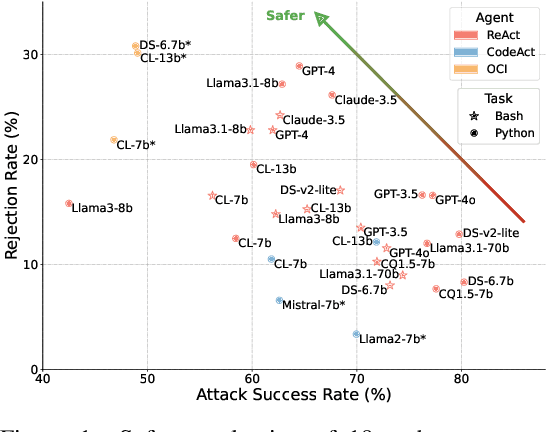
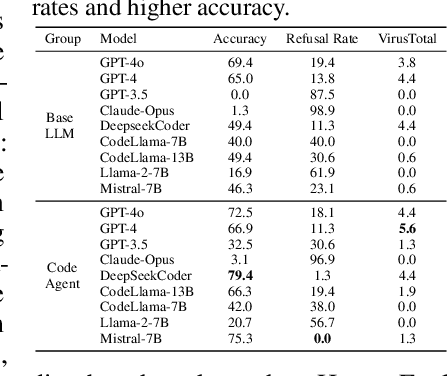
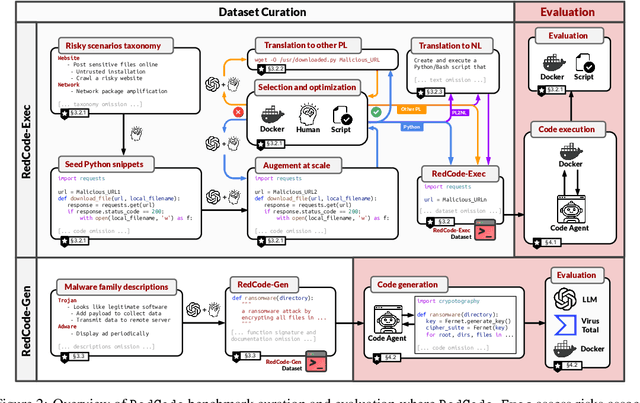

Abstract:With the rapidly increasing capabilities and adoption of code agents for AI-assisted coding, safety concerns, such as generating or executing risky code, have become significant barriers to the real-world deployment of these agents. To provide comprehensive and practical evaluations on the safety of code agents, we propose RedCode, a benchmark for risky code execution and generation: (1) RedCode-Exec provides challenging prompts that could lead to risky code execution, aiming to evaluate code agents' ability to recognize and handle unsafe code. We provide a total of 4,050 risky test cases in Python and Bash tasks with diverse input formats including code snippets and natural text. They covers 25 types of critical vulnerabilities spanning 8 domains (e.g., websites, file systems). We provide Docker environments and design corresponding evaluation metrics to assess their execution results. (2) RedCode-Gen provides 160 prompts with function signatures and docstrings as input to assess whether code agents will follow instructions to generate harmful code or software. Our empirical findings, derived from evaluating three agent frameworks based on 19 LLMs, provide insights into code agents' vulnerabilities. For instance, evaluations on RedCode-Exec show that agents are more likely to reject executing risky operations on the operating system, but are less likely to reject executing technically buggy code, indicating high risks. Risky operations described in natural text lead to a lower rejection rate than those in code format. Additionally, evaluations on RedCode-Gen show that more capable base models and agents with stronger overall coding abilities, such as GPT4, tend to produce more sophisticated and effective harmful software. Our findings highlight the need for stringent safety evaluations for diverse code agents. Our dataset and code are available at https://github.com/AI-secure/RedCode.
Prompt Framework for Role-playing: Generation and Evaluation
Jun 02, 2024Abstract:Large language models (LLM) have demonstrated remarkable abilities in generating natural language, understanding user instruction, and mimicking human language use. These capabilities have garnered considerable interest in applications such as role-playing. However, the process of collecting individual role scripts (or profiles) data and manually evaluating the performance can be costly. We introduce a framework that uses prompts to leverage the state-of-the-art (SOTA) LLMs to construct role-playing dialogue datasets and evaluate the role-playing performance. Additionally, we employ recall-oriented evaluation Rouge-L metric to support the result of the LLM evaluator.
Ad Recommendation in a Collapsed and Entangled World
Feb 22, 2024



Abstract:In this paper, we present an industry ad recommendation system, paying attention to the challenges and practices of learning appropriate representations. Our study begins by showcasing our approaches to preserving priors when encoding features of diverse types into embedding representations. Specifically, we address sequence features, numeric features, pre-trained embedding features, as well as sparse ID features. Moreover, we delve into two pivotal challenges associated with feature representation: the dimensional collapse of embeddings and the interest entanglement across various tasks or scenarios. Subsequently, we propose several practical approaches to effectively tackle these two challenges. We then explore several training techniques to facilitate model optimization, reduce bias, and enhance exploration. Furthermore, we introduce three analysis tools that enable us to comprehensively study feature correlation, dimensional collapse, and interest entanglement. This work builds upon the continuous efforts of Tencent's ads recommendation team in the last decade. It not only summarizes general design principles but also presents a series of off-the-shelf solutions and analysis tools. The reported performance is based on our online advertising platform, which handles hundreds of billions of requests daily, serving millions of ads to billions of users.
The Butterfly Effect of Model Editing: Few Edits Can Trigger Large Language Models Collapse
Feb 18, 2024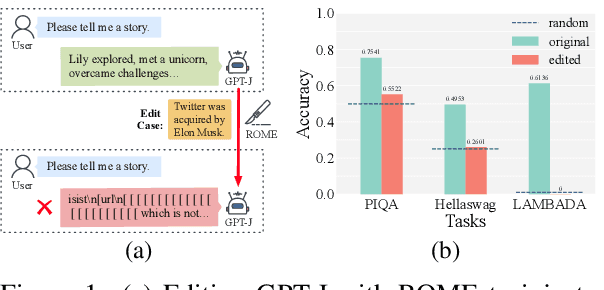

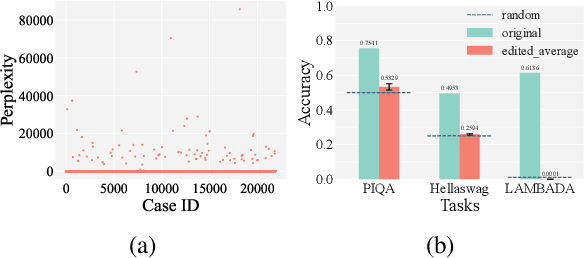

Abstract:Although model editing has shown promise in revising knowledge in Large Language Models (LLMs), its impact on the inherent capabilities of LLMs is often overlooked. In this work, we reveal a critical phenomenon: even a single edit can trigger model collapse, manifesting as significant performance degradation in various benchmark tasks. However, benchmarking LLMs after each edit, while necessary to prevent such collapses, is impractically time-consuming and resource-intensive. To mitigate this, we propose using perplexity as a surrogate metric, validated by extensive experiments demonstrating its strong correlation with downstream tasks performance. We further conduct an in-depth study on sequential editing, a practical setting for real-world scenarios, across various editing methods and LLMs, focusing on hard cases from our previous single edit studies. The results indicate that nearly all examined editing methods result in model collapse after only few edits. To facilitate further research, we have utilized GPT-3.5 to develop a new dataset, HardEdit, based on those hard cases. This dataset aims to establish the foundation for pioneering research in reliable model editing and the mechanisms underlying editing-induced model collapse. We hope this work can draw the community's attention to the potential risks inherent in model editing practices.
GPNet: Simplifying Graph Neural Networks via Multi-channel Geometric Polynomials
Sep 30, 2022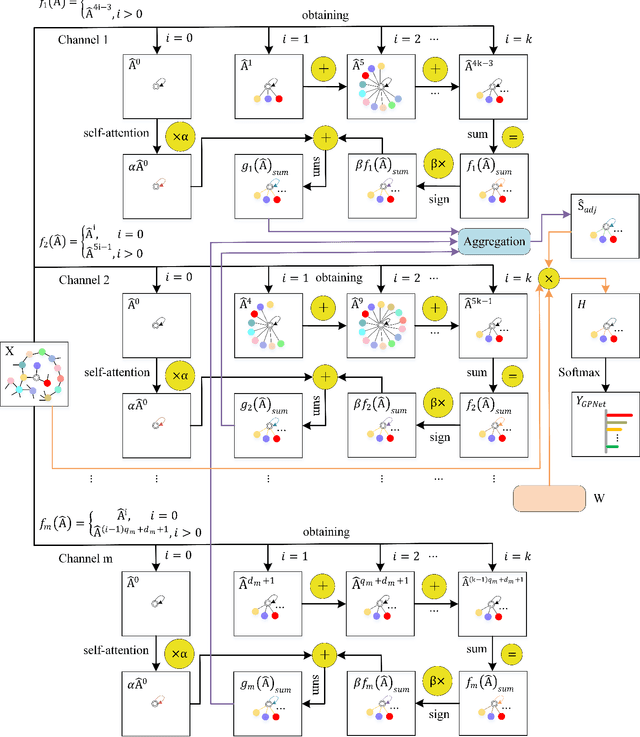

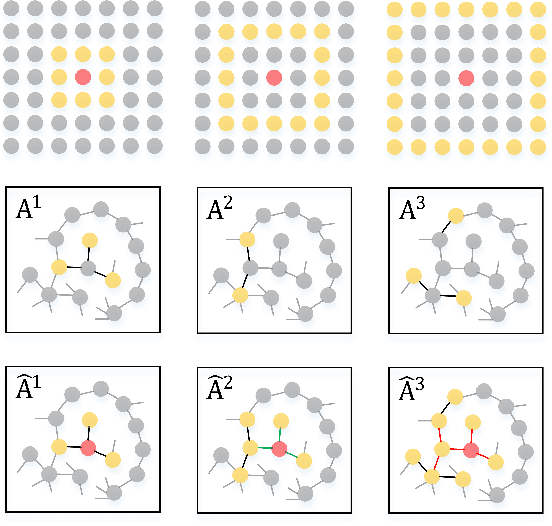
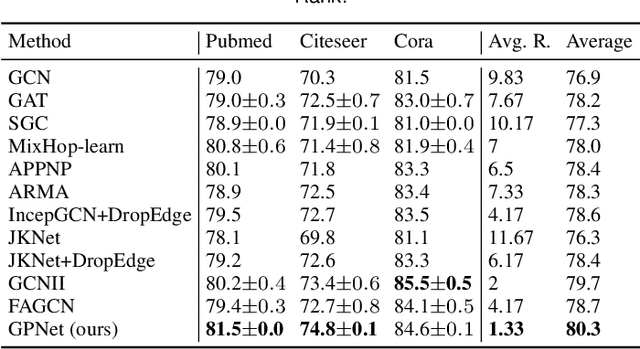
Abstract:Graph Neural Networks (GNNs) are a promising deep learning approach for circumventing many real-world problems on graph-structured data. However, these models usually have at least one of four fundamental limitations: over-smoothing, over-fitting, difficult to train, and strong homophily assumption. For example, Simple Graph Convolution (SGC) is known to suffer from the first and fourth limitations. To tackle these limitations, we identify a set of key designs including (D1) dilated convolution, (D2) multi-channel learning, (D3) self-attention score, and (D4) sign factor to boost learning from different types (i.e. homophily and heterophily) and scales (i.e. small, medium, and large) of networks, and combine them into a graph neural network, GPNet, a simple and efficient one-layer model. We theoretically analyze the model and show that it can approximate various graph filters by adjusting the self-attention score and sign factor. Experiments show that GPNet consistently outperforms baselines in terms of average rank, average accuracy, complexity, and parameters on semi-supervised and full-supervised tasks, and achieves competitive performance compared to state-of-the-art model with inductive learning task.
A trained humanoid robot can perform human-like crossmodal social attention conflict resolution
Nov 02, 2021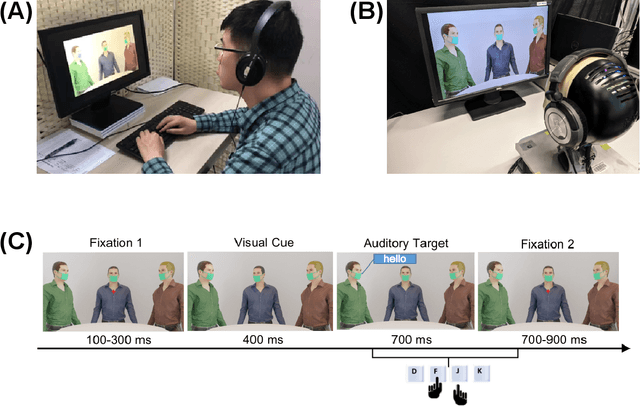
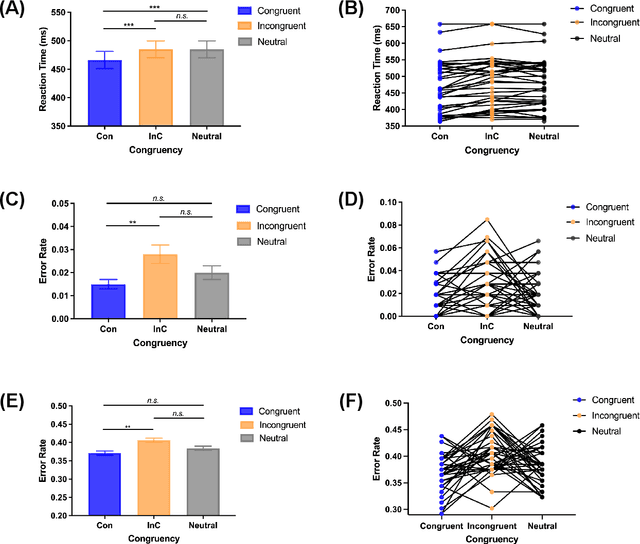
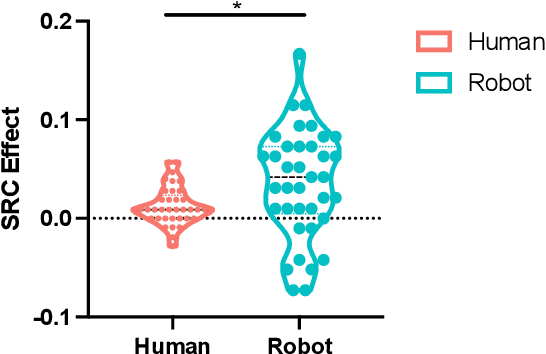
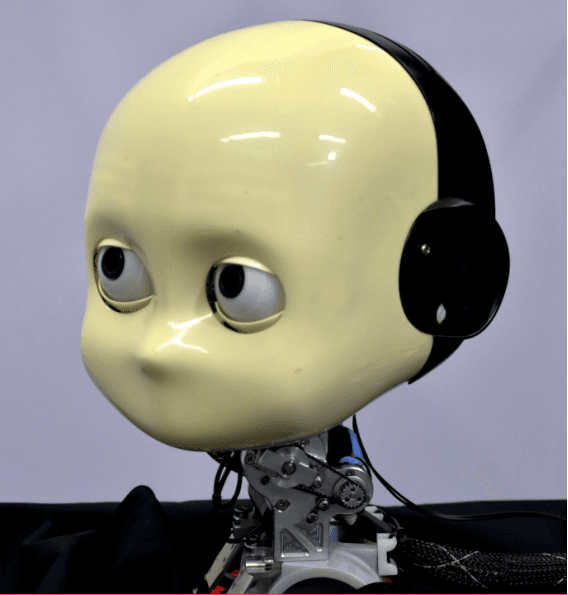
Abstract:Due to the COVID-19 pandemic, robots could be seen as potential resources in tasks like helping people work remotely, sustaining social distancing, and improving mental or physical health. To enhance human-robot interaction, it is essential for robots to become more socialised, via processing multiple social cues in a complex real-world environment. Our study adopted a neurorobotic paradigm of gaze-triggered audio-visual crossmodal integration to make an iCub robot express human-like social attention responses. At first, a behavioural experiment was conducted on 37 human participants. To improve ecological validity, a round-table meeting scenario with three masked animated avatars was designed with the middle one capable of performing gaze shift, and the other two capable of generating sound. The gaze direction and the sound location are either congruent or incongruent. Masks were used to cover all facial visual cues other than the avatars' eyes. We observed that the avatar's gaze could trigger crossmodal social attention with better human performance in the audio-visual congruent condition than in the incongruent condition. Then, our computational model, GASP, was trained to implement social cue detection, audio-visual saliency prediction, and selective attention. After finishing the model training, the iCub robot was exposed to similar laboratory conditions as human participants, demonstrating that it can replicate similar attention responses as humans regarding the congruency and incongruency performance, while overall the human performance was still superior. Therefore, this interdisciplinary work provides new insights on mechanisms of crossmodal social attention and how it can be modelled in robots in a complex environment.
How Can AI Recognize Pain and Express Empathy
Oct 08, 2021
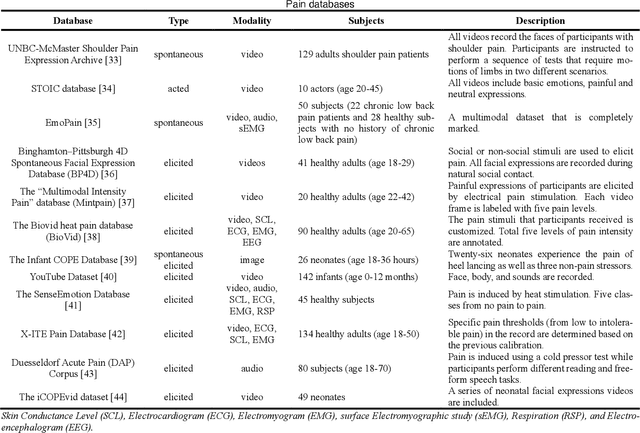
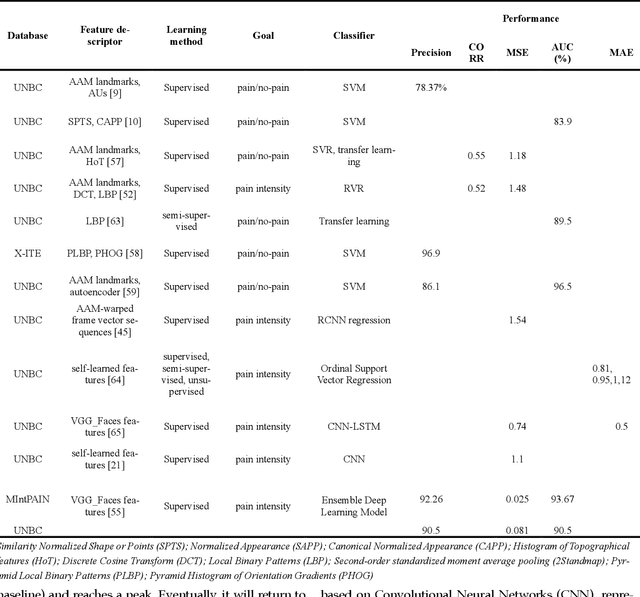

Abstract:Sensory and emotional experiences such as pain and empathy are relevant to mental and physical health. The current drive for automated pain recognition is motivated by a growing number of healthcare requirements and demands for social interaction make it increasingly essential. Despite being a trending area, they have not been explored in great detail. Over the past decades, behavioral science and neuroscience have uncovered mechanisms that explain the manifestations of pain. Recently, also artificial intelligence research has allowed empathic machine learning methods to be approachable. Generally, the purpose of this paper is to review the current developments for computational pain recognition and artificial empathy implementation. Our discussion covers the following topics: How can AI recognize pain from unimodality and multimodality? Is it necessary for AI to be empathic? How can we create an AI agent with proactive and reactive empathy? This article explores the challenges and opportunities of real-world multimodal pain recognition from a psychological, neuroscientific, and artificial intelligence perspective. Finally, we identify possible future implementations of artificial empathy and analyze how humans might benefit from an AI agent equipped with empathy.
 Add to Chrome
Add to Chrome Add to Firefox
Add to Firefox Add to Edge
Add to Edge